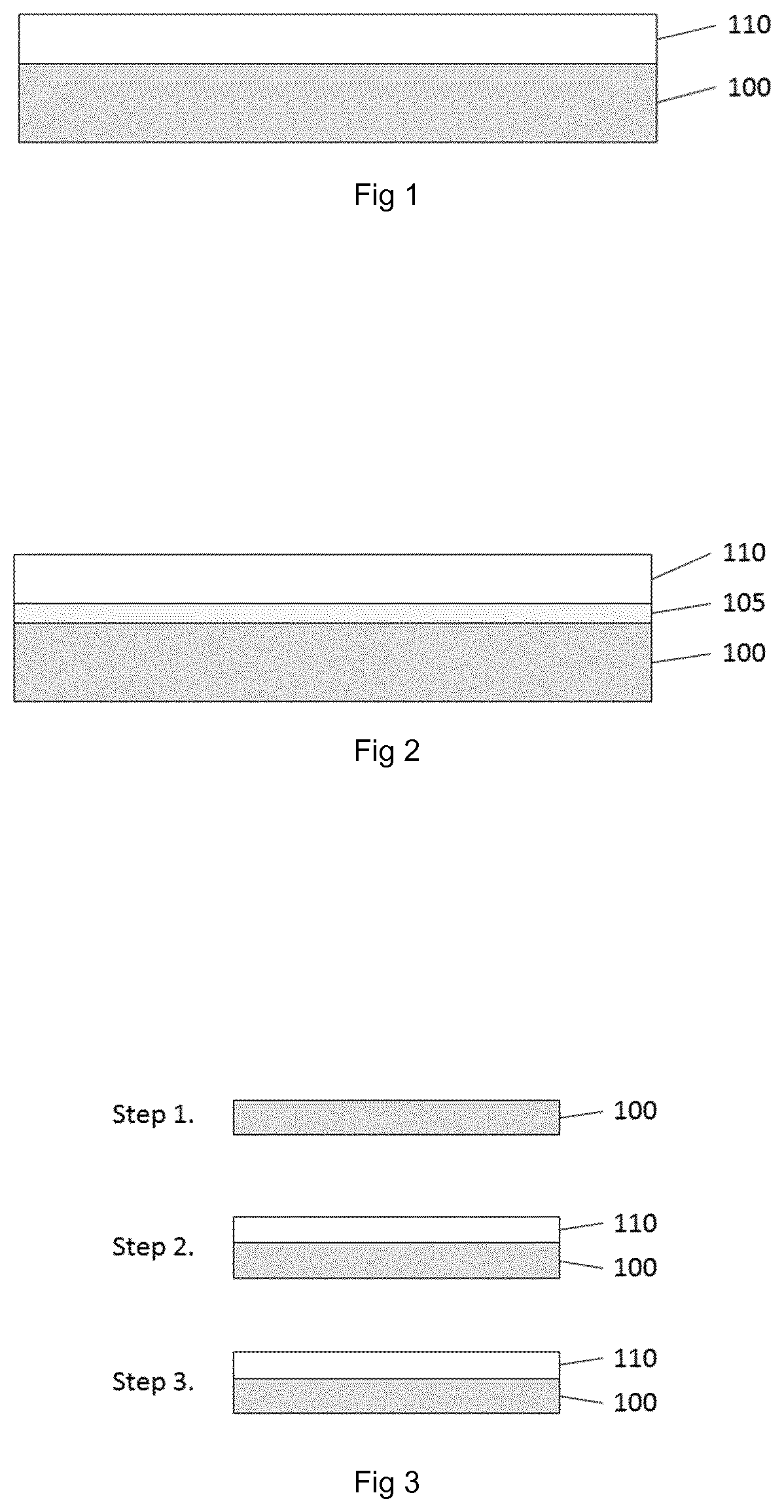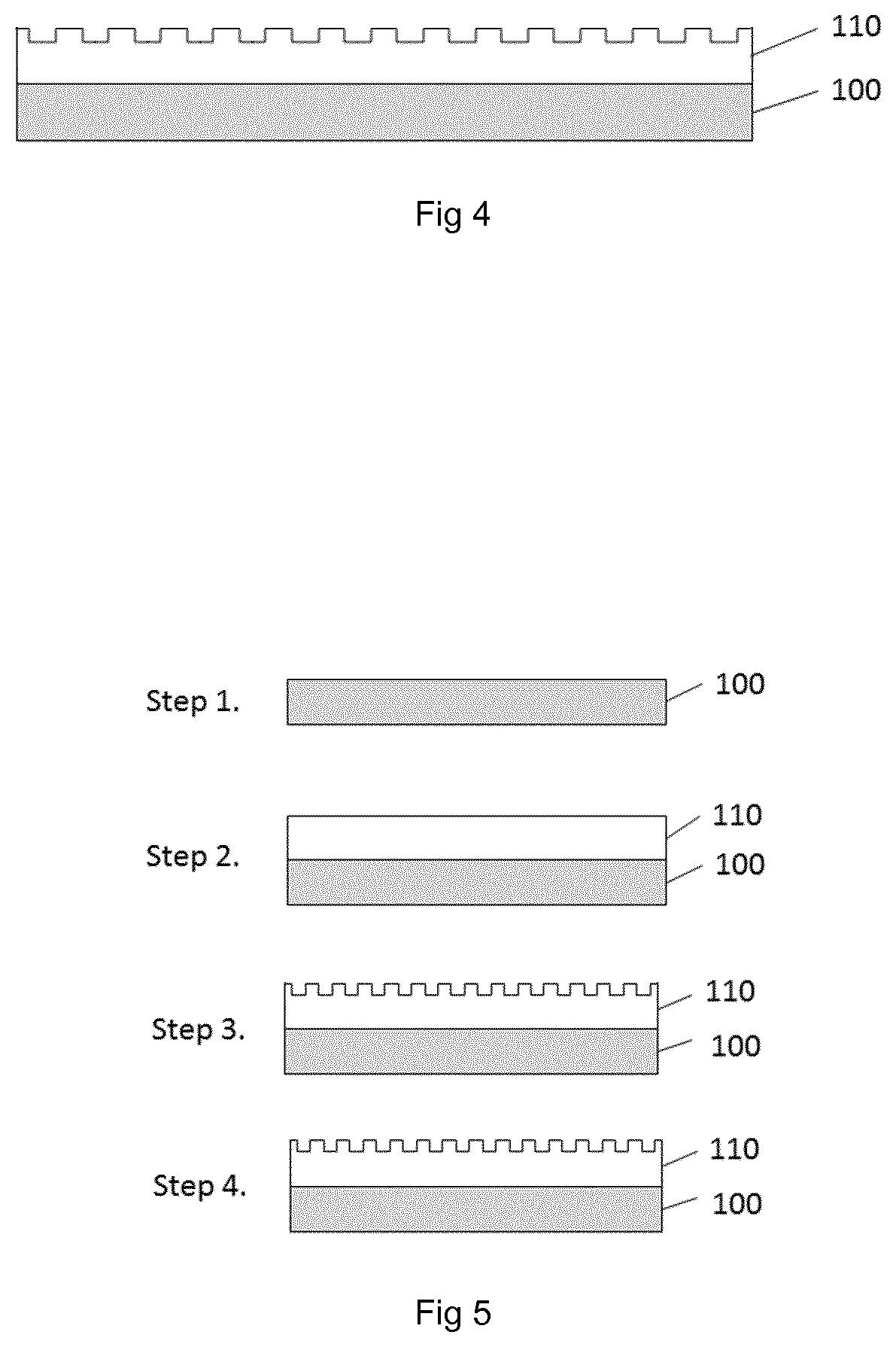Easy to clean coating
a technology of easy cleaning and coating, applied in the field of easy cleaning coating, can solve the problems of high production cost, poor long-term thermal stability of monolayer coating, and inability to pass severe abrasion resistance conditions, and achieve excellent surface cleanability, enhanced optical properties of display devices, and superior hardness.
- Summary
- Abstract
- Description
- Claims
- Application Information
AI Technical Summary
Benefits of technology
Problems solved by technology
Method used
Image
Examples
synthesis examples
Example 1
[0322]Solution 1: Tetraethoxysilane (63.84 g) and acetone (200 g) was placed to the round bottom flask. 44.6 g of 0.1M HNO3 was added dropwise. Solution was refluxed at 95° C. for 1 hours and cooled down. Acetone was removed by rotary evaporator and 2-methoxy-propanol was added. Solution amount achieved was 178 g and it solid content was 14.45%. Solution was further diluted to 10% using 2-methoxy-propanol (79.21 grams).
1A. Formulation Preparation (SC=0.75%)
[0323]25 g of Optool™ DSX E (diluted from 20% down to 0.4% using NOVEC 3700), 74.73 g of NOVEC 3700, 81.17 g of 2-methoxy-1-propanol, 4.96 g of ethylene glycol and 15 g of solution 1 was added to the 500 ml round bottom flask and stirred and reacted over a night prior the processing.
1 B. Formulation Preparation (SC=0.85%)
[0324]15 g of Optool™ DSX E (diluted from 20% down to 0.4% using NOVEC 7100), 84.64 g of NOVEC 7100, 79.32 g of 2-methoxy-1-propanol, 4.96 g of ethylene glycol and 17 g of solution 1 was added to the 500 ...
example 2
[0325]Solution 2: Tetraethoxysilane (60.64 g), 1,2-bistriethoxysilylethane (5.43 g) and acetone (200 g) was placed to the round bottom flask. 45.26 g of 0.1M HNO3 was added dropwise. Solution was refluxed at 95° C. for 1 hours and cooled down. Acetone was removed by rotary evaporator and 2-methoxy-propanol was added. Solution amount achieved was 178.66 g and it solid content was 17.20%. Solution was further diluted to 10% using 2-methoxy-propanol (128.59 g).
2A. Formulation Preparation (SC=0.75%)
[0326]25 g of Optool™ DSX E (diluted from 20% down to 0.4% using NOVEC 7100), 74.73 g of NOVEC 7100, 81.17 g of 2-methoxy-1-propanol, 4.96 g of ethylene glycol and 15 g of solution 2 was added to the 500 ml round bottom flask and stirred and reacted over a night prior the processing.
example 3
[0327]Solution 3: Tetraethoxysilane (60.64 g), phenyltrimethoxysilane (2.73 g) and acetone (200 g) was placed to the round bottom flask. 43.60 g of 0.1M HNO3 was added dropwise. Solution was refluxed at 95° C. for 1 hours and cooled down. Acetone was removed by rotary evaporator and 2-methoxy-propanol was added. Solution amount achieved was 176 g and it solid content was 16.44%. Solution was further diluted to 10% using 2-methoxy-propanol (113.34 g).
3A. Formulation Preparation (SC=0.75%)
[0328]25 g of Optool™ DSX E (diluted from 20% down to 0.4% using NOVEC 7100), 74.73 g of NOVEC 7100, 81.17 g of 2-methoxy-1-propanol, 4.96 g of ethylene glycol and 15 g of solution 3 was added to the 500 ml round bottom flask and stirred and reacted over a night prior the processing.
PUM
| Property | Measurement | Unit |
|---|---|---|
| Thickness | aaaaa | aaaaa |
| Volume | aaaaa | aaaaa |
| Volume | aaaaa | aaaaa |
Abstract
Description
Claims
Application Information
 Login to View More
Login to View More - R&D
- Intellectual Property
- Life Sciences
- Materials
- Tech Scout
- Unparalleled Data Quality
- Higher Quality Content
- 60% Fewer Hallucinations
Browse by: Latest US Patents, China's latest patents, Technical Efficacy Thesaurus, Application Domain, Technology Topic, Popular Technical Reports.
© 2025 PatSnap. All rights reserved.Legal|Privacy policy|Modern Slavery Act Transparency Statement|Sitemap|About US| Contact US: help@patsnap.com


